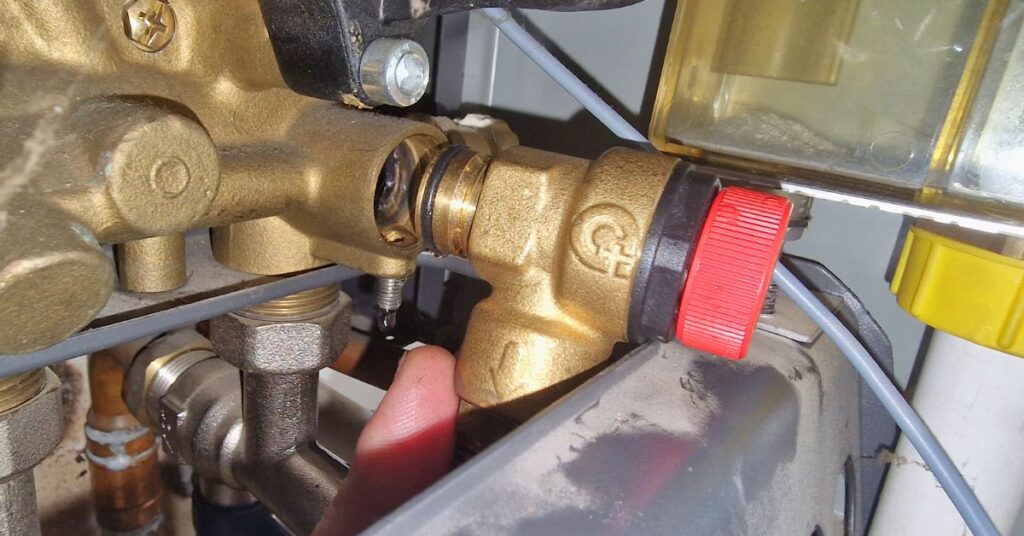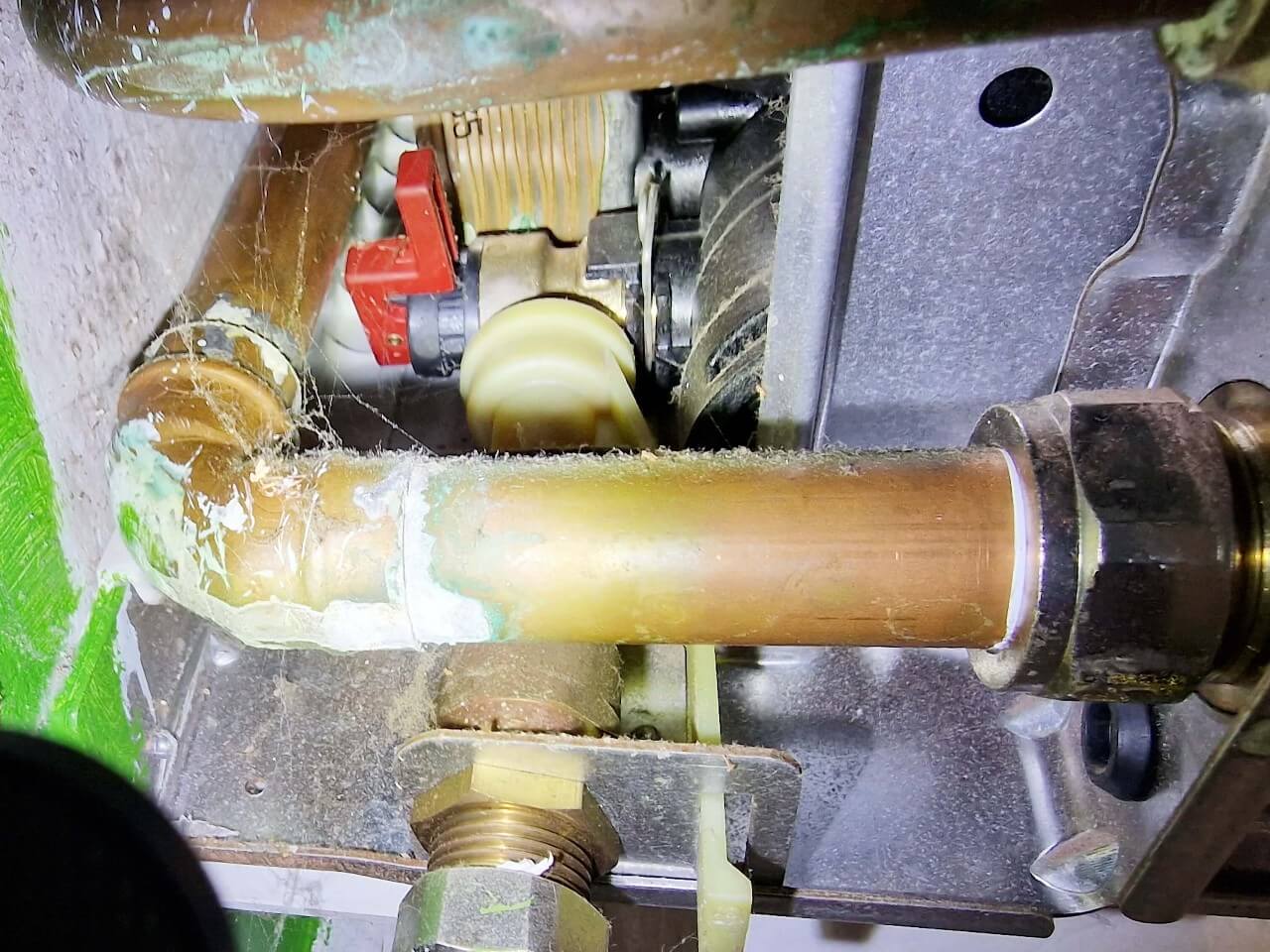Water Leaking From Pressure Relief Valve On Boiler

A leaking pressure relief valve on a boiler, whether in a residential home, a commercial building, or an industrial facility, is a serious issue that demands immediate attention. It's a clear sign that something is amiss within the system, and ignoring it can lead to significant damage, costly repairs, and even dangerous situations. This article delves into the reasons behind a leaking pressure relief valve, troubleshooting steps, and when to call in a professional. We’ll cover everything from basic diagnostics for homeowners to more in-depth analysis for technicians and property managers.
Understanding the Pressure Relief Valve (PRV)
The pressure relief valve (PRV), also known as a safety valve, is a critical safety component on any boiler system. Its primary function is to protect the boiler from over-pressurization. Boilers are designed to operate within a specific pressure range, usually indicated on the boiler's nameplate. When the pressure inside the boiler exceeds this limit, the PRV automatically opens, releasing excess pressure in the form of water or steam. This prevents the boiler from potentially exploding due to excessive pressure buildup.
Think of it like the emergency release valve on a pressure cooker. If the pressure inside gets too high, the valve releases steam to prevent a dangerous explosion. The PRV on your boiler serves the same vital role.
Identifying a Leaking PRV
Recognizing a leaking PRV is usually straightforward. The most obvious sign is water dripping or steadily flowing from the valve's discharge pipe. This pipe is typically located near the boiler and is designed to direct any released water safely away from the unit and potentially living areas. You might also notice:
- A hissing sound coming from the valve.
- Visible signs of corrosion around the valve.
- Water stains or dampness near the base of the boiler.
Even a small, consistent drip should be addressed promptly. It’s not just about water waste; it's a warning sign of a potentially larger problem.
Common Causes of a Leaking Pressure Relief Valve
Several factors can contribute to a leaking PRV. Understanding these causes is essential for accurate diagnosis and effective repair:
1. Excessive Water Pressure
The most frequent cause is excessive water pressure within the boiler system. This can be due to a faulty pressure reducing valve (PRV) on the incoming water supply. The PRV regulates the water pressure entering the boiler system. If it fails, the pressure can climb above the boiler's operating limit, causing the relief valve to activate and leak. Municipal water pressure that's too high can also overwhelm the system, especially in older buildings.
Example: Imagine your home's water pressure is normally 60 PSI. A malfunctioning PRV could allow pressure to spike to 90 PSI, exceeding the boiler's maximum operating pressure of 80 PSI and triggering the pressure relief valve.
2. Faulty Expansion Tank
The expansion tank is another crucial component of a hydronic heating system. It's designed to accommodate the expansion of water as it heats up. As water temperature rises, its volume increases. The expansion tank provides a space for this expanded water, preventing pressure buildup. If the expansion tank is waterlogged (filled with water instead of air) or undersized, it cannot effectively absorb the expanding water, leading to over-pressurization and a leaking PRV.
Technician Note: When inspecting the expansion tank, check the pre-charge pressure with a tire pressure gauge. It should match the system's fill pressure, typically around 12-15 PSI. A waterlogged tank will often have little to no air pressure.
3. Overfilling the Boiler
Filling the boiler to an excessive level can also cause the PRV to leak. There's a specific water level that needs to be maintained within the boiler. Overfilling leaves less room for expansion, leading to increased pressure as the water heats.
4. Defective Pressure Relief Valve
Sometimes, the PRV itself is simply defective. Over time, the valve's internal spring can weaken, or debris can become lodged in the valve seat, preventing it from sealing properly. This can cause the valve to leak even when the system pressure is within the normal range.
5. High Boiler Temperature
Although less common, excessive boiler water temperature can also contribute to over-pressurization. If the boiler's thermostat or temperature control system malfunctions, the water could overheat, leading to excessive steam production and a pressure increase that triggers the PRV.
Troubleshooting Steps
Before calling a professional, there are some troubleshooting steps homeowners and property managers can take:
- Check the Boiler Pressure Gauge: The pressure gauge should indicate the system pressure. Make sure it's within the operating range specified by the boiler manufacturer. A reading above the maximum pressure indicates a problem.
- Inspect the Expansion Tank: As mentioned earlier, check the pre-charge pressure of the expansion tank. If it's waterlogged, it needs to be drained and recharged or replaced.
- Inspect the Pressure Reducing Valve: Look for signs of damage or corrosion. You can also try adjusting the valve to see if it lowers the system pressure. If you're uncomfortable working with plumbing, it's best to call a professional.
- Check the Water Level: If your boiler has a sight glass or other indicator, verify that the water level is within the recommended range.
- Manually Test the PRV (Caution Required): *This should be done with extreme caution and only if you feel comfortable doing so.* Briefly lift the test lever on the PRV to flush out any debris. Be prepared for hot water to discharge. Release the lever immediately. If the valve continues to leak afterward, it may be defective.
Warning: Never attempt to repair a pressure relief valve yourself. These are safety devices, and improper repairs can compromise their functionality and create a dangerous situation.
When to Call a Professional
If you've tried the basic troubleshooting steps and the PRV is still leaking, or if you're uncomfortable working with plumbing or electrical components, it's time to call a qualified HVAC technician. A professional will be able to:
- Accurately diagnose the root cause of the problem.
- Replace or repair the PRV, expansion tank, or pressure reducing valve.
- Adjust the system pressure and water level.
- Ensure the boiler is operating safely and efficiently.
Cost Considerations
The cost of repairing a leaking PRV can vary depending on the cause of the problem. Replacing a PRV itself is relatively inexpensive, typically ranging from $50 to $150 for the part. However, if the problem is due to a faulty expansion tank or pressure reducing valve, the cost can be higher, ranging from $200 to $500 or more, including labor. Complex issues that require extensive diagnostics and repairs can potentially exceed these estimates.
Preventive maintenance, such as annual boiler inspections, can help identify potential problems before they lead to costly repairs. A well-maintained boiler will also operate more efficiently, saving you money on energy bills over the long term.
Long-Term Considerations and System Efficiency
Addressing a leaking PRV promptly is not only about safety but also about maintaining the overall efficiency of your heating system. A consistently leaking valve wastes water and energy, leading to higher utility bills. It can also contribute to corrosion and damage to other components of the boiler system. Regular maintenance, including checking the system pressure, expansion tank, and PRV, can help extend the lifespan of your boiler and ensure it operates at peak efficiency. Consider having your boiler professionally serviced annually to identify and address potential problems before they escalate.
For property managers overseeing large buildings, implementing a proactive maintenance program for all boiler systems is crucial. This includes regular inspections, pressure testing, and component replacements as needed. Keeping detailed records of maintenance activities can help track performance and identify trends that might indicate potential problems.










